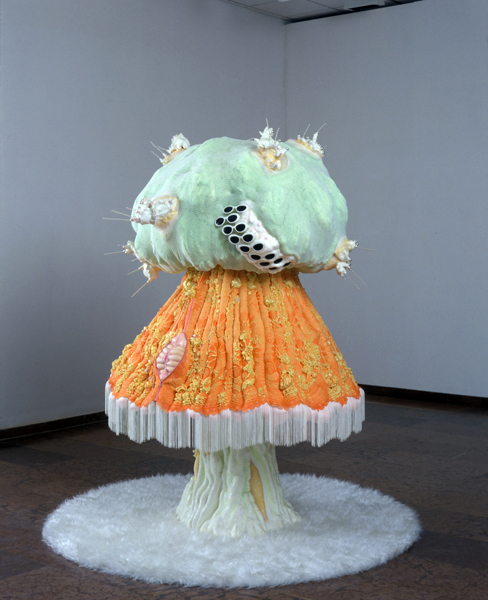Due to the increasing individualism within both the economic and social sphere during the twentieth century, the individual has been put into a difficult situation. While the individual takes pains with her/his own spiritual/intellectual and material development, s/he nevertheless cannot ignore the fact that s/he also has a need for the milieu around her/him. The exhibition entitled Rondo, expressed in a universal way, endeavours to present the multiplicity of human relations by way of the artworks of Central and Eastern European artists.
It is worth restricting ourselves to this region because in view of the economic and social construction over the past ten years, these countries have undergone fundamental transformations. Among the people living here, there have been those who have been compelled to settle accounts with their lives until then, whilst others have readily welcomed the opportunity for new beginnings.
Time, which we generally perceive in the present tense, appears to accelerate more and more. The trends chase one after the other, appearing in a different colour from day to day, in the interest of not becoming boring. Jiri Cernicky comments upon this consumer attitude which knows no restraint in an ironic intonation. He makes eclectic, ultramodern - and ultrakitsch - objects / sculptures, which suggest that it is not we who summon nor generate the social changes, but that we are rather merely spectators at their mercy.
At the same time, the question of the role of the past in today's world is raised. What do we preserve; what do we carry further? Do we look back on our history, our traditions, or do we truly surrender ourselves to the present and to dizzying visions of the future? Ana Lupas and Roman Ondák undertake a type of archiving work. While one assembles a depiction of the past from layers of clothing articles, the other conserves the masterpieces of cultural history in Mason jars. Péter Forgács processes found amateur film footage. With the aid of the editing and the artist's commentary, the history of various unknown individuals is brought to life.
In this accelerated world which knows no stopping, the vulnerability of the human body is increasingly intensively palpable. Newer and newer incurable diseases curtail our lives, our bodies and our consciousness. Even art cannot remain silent on that issue. Zbigniew Libera and Artur Zmijewski treat not only the subject of our human frailty in their works, but also cast light upon the fact that people are so dependent upon each other. They bring such themes into the public space, which are usually treated as taboo by society.
The exhibition on the one hand, recalls the exhibitions organised since the Museum's establishment, and on the other hand, offers an outlook towards its plans for the near future. We have selected, in part, the works of those artists who have already been presented here, and who are represented in our collection (e.g., Dan Perjovschi, Zuzanna Janin, Nedko Solakov), and in part, we present the works of younger creators (e.g. Aleksandar Ilic, Veronika Bromová) who speak an international language with respect to the world around them.
Exhibiting artists: Balázs Beöthy (Budapest), Veronika Bromová (Prague), Imre Bukta (Mezõszemere), Jirí Cernicky (Prague), Mária Chilf (Budapest), Orsolya Drozdik (Budapest/New York), Péter Forgács (Budapest), Aleksandar Ilic (Zagreb), Zuzanna Janin (Warsaw), Ivan Kaflca (Prague), Zbigniew Libera (Warsaw), Ana Lupas (Bucharest), Hajnal Németh (Budapest), Roman Ondák (Bratislava), Dan Perjovschi (Bucharest), Mariola Przyjemska (Warsaw), Nedko Solakov (Sofia), SI-LA-GI (Budapest), Gyula Várnai (Dunaújváros), Jana Zelibská (Bratislava), Artur Zmijewski (Warsaw). The artists will be present at the opening (with the exception of Artur Zmijewski and Jana Zelibská).

